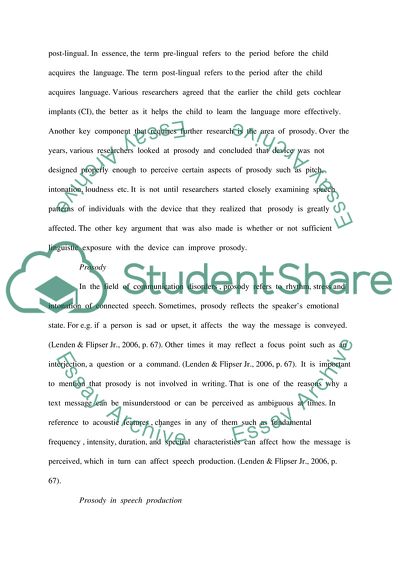Cite this document
(The Challenges Faced by People with Cochlear Implants as It Relates to Research Paper, n.d.)
The Challenges Faced by People with Cochlear Implants as It Relates to Research Paper. Retrieved from https://studentshare.org/social-science/1726651-prosody-in-speech-perception-and-speech-production
The Challenges Faced by People with Cochlear Implants as It Relates to Research Paper. Retrieved from https://studentshare.org/social-science/1726651-prosody-in-speech-perception-and-speech-production
(The Challenges Faced by People With Cochlear Implants As It Relates to Research Paper)
The Challenges Faced by People With Cochlear Implants As It Relates to Research Paper. https://studentshare.org/social-science/1726651-prosody-in-speech-perception-and-speech-production.
The Challenges Faced by People With Cochlear Implants As It Relates to Research Paper. https://studentshare.org/social-science/1726651-prosody-in-speech-perception-and-speech-production.
“The Challenges Faced by People With Cochlear Implants As It Relates to Research Paper”, n.d. https://studentshare.org/social-science/1726651-prosody-in-speech-perception-and-speech-production.


